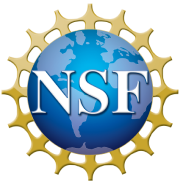Vis-a-thon 2025
Transitional Spaces
Authors
Charlie Nicholson Assistant Professor, Roger Williams University, Environmental Science scholar.google.com/citations?user=QB5aJrUAAAAJ&hl=en&oi=ao Bluesky: @buzznicholson
COLLABORATOR
Vishakha Ruhela MFA, Rhode Island School of Design, Graphic Design vishakharuhela.com Instagram: @curious_case_of_a_cancerian
Critic
Emma Hogarth
Transitional Spaces is a collaboration probing the poetry of decay etched into bumblebee wings. Like tree rings or worn teeth, wing deterioration holds stories about the bumblebees’ lives—a language the project decodes through hybrid and tactile forms.
The project began with 5,000 macro photographs of wings. Through R Studio, Illustrator, and Visual Studio Code, images became vectors—not as isolated fragments, but as a collective volume, revealing gradients between pristine and weathered edges. The explorations oscillated between code and canvas, algorithm and instinct, to forge three interconnected expressions: cyanotype prints, their deep blues echoing fossilised imprints and traces; pen-plotted drawings where ink metamorphosed into varied forms with the help of nibs and brushes, merging machine precision with tactile irregularity; and sequential web animations that flickered and transitioned with ghost-like traces.
Wing edges, extruded into three-dimensional forms, morphed into topographies of the edges’ paths. These digital sculptures, translated into wireframes, mapped deterioration density—their contours evoked organic decay, extracted from the data. Imperfection humanised the process: pen plotter chorused creaks and cracks, cyanotype chemicals transferred unpredictably, creating moments of translations between the machines and the human hands.
Transitional Spaces inhabits the liminal, where the wing’s transformation is both metric and metaphor. Central to the work is the tension between quantification and slippage. While machine learning parsed wing wear to estimate age, the collaborators took joy in the unanswerable—can these forms tell us a story the data hides within?
INITIAL PROPOSAL NOTECARD
"Transitional Spaces began by examining the bumblebee wing datasets as a collective volume rather than focusing microscopically on individual wings. To visualise transitions between wing edges, we experimented with animating the entire set of approximately 5,000 wings from Charlie’s research."
—Vishakha
“While our initial focus was digital animation, we also explored analog methods. We repurposed a cutting master machine in the Graphic Design grad studio as a pen plotter and drew on more than 10 yards of paper! To achieve textures and background colours, we developed cyanotypes to represent wings non-digitally. We filtered our datasets to select key wing wireframes. Though still macroscopic, we narrowed focus to a single bumblebee's wings, examining in-between shapes of both edges. We also sculpted 3D forms digitally on Adobe Illustrator from select wing edges, transforming flat wings into visually tactile objects.”
—Vishakha
"Our project evolved into a spectrum of visualisation methods bridging digital and analog techniques. The collaboration was a joyful one as we exchanged roles, complementing each other's skills. For SVG vector development, Charlie used R Studio to process wing image datasets in bulk, while my Adobe Illustrator skills helped create different blends and wireframes from this data."
—Vishakha
CHARLIE & VISHAKHA SHARING THEIR WORKFLOW WITH STEWART
“It was a rare opportunity to work alongside a scientific researcher with real-life datasets to create artworks using experimental graphic techniques. Supporting each other's ideas while remaining open to experimentation led to deeper research and a variety of discoveries. “
—Vishakha
Tools Used in the Project
R Studio Adobe Illustrator Visual Studio Code Cyanotype Pen Plotter
Copyright
© Transitional Spaces, 2025

This material is based upon work supported in part by the National Science Foundation under EPSCoR Cooperative Agreement #OIA-1655221.
Any opinions, findings, and conclusions or recommendations expressed in this material are those of the author(s) and do not necessarily reflect the views of the National Science Foundation.





